Cutoff is dead. Long live Cutoff. Most lighting designers are somewhat familiar with the Cutoff classification system for fixtures. It’s a measure of how well an area or roadway luminaire controls its output, preventing glare from high-angle brightness and wasted polluting light that goes directly up into the atmosphere.
Well. The Illumination Engineering Society (IES) recently deprecated the familiar Full Cutoff/Cutoff/Semi-Cutoff/Non-Cutoff system in favor of BUG ratings. And what, you may ask, in entomological hell are BUG ratings? The Backlight-Uplight-Glare rating is a set of three numbers which describe how well a fixture controls and directs the light it emits. It provides a more granular classification of a fixtures performance, correctly scales for LED luminaires that use absolute photometry, and in conjunction with the forthcoming Model Lighting Ordinance addresses excessive lumen packages. Very exciting, but we’ll first look at some examples to explain the motivation for the change.
A Review of prior art: The basic idea of the Cutoff classification is that for a given lamp lumen output, the fixture should not emit excessive candela above a certain threshold in the upper angles. Cutoff attempts to address uplight (light pollution) and high angle brightness (glare) within a single classification. For example, in order to be Cutoff, the fixture would have to emit no more than 25 candela per 1000 lamp lumens above the horizontal line (uplight), and no more than 100 candela per 1000 lamp lumens between 80 degrees and horizontal (glare).
Let’s get into the weeds: Recall that candela is a spot measurement of luminous intensity in a given direction, whereas the lumen is a measurement of luminous flux over a given section of a sphere around the source. In calculus terms, lumens are derived by integrating (‘summing’) the candela value function over the angular domain we are interested in. So we have here a ratio between the maximum allowable spot intensity and the total lighting output of the lamp. The advantage of using a ratio like this is that it scales for different lamp wattages, so that the same fixture will have the same cutoff classification for a 150W lamp as a 250W lamp, as the ratio between the spot intensity at 90 degrees (candela) and the total output of the lamp (lumens) is the same.
Still with me? Here are the four Cutoff classifications, and an example of each:
Full Cutoff: A luminaire light distribution where zero candela intensity occurs at an angle of 90° above nadir, and at all greater angles from nadir. Additionally, the candela per 1000 lamp lumens does not numerically exceed 100 (10%) at vertical angle of 80° above nadir. This applies to all lateral angles around the luminaire.1 For our example, we’ll use the Kim Lighting Warp9 with 250W PSMH lamp and type III distribution. The part number would be something along the lines of WP9LE3-250PMH(Volt)-(Finish)-1A.
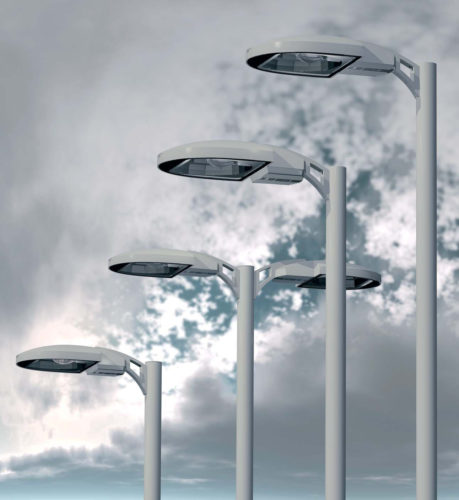
Lamp lumens (as shown in IES file): 22,000 2
Max candela above 90 degrees: 0
Candela per 1000 lumens above 90: 0 / 22,000 = 0 / 1000, which is ≤ the required 0 candela / 1000 lumens
Max candela between 80 and 90 degrees: 1143
Candela per lumens between 80 and 90: 1143 / 22,000 = 52 / 1000, which is ≤ 100 candela / 1000 lumens
So this fixture has a classification of Full Cutoff. Full roadway photometric report may be downloaded here.
Cutoff: A luminaire light distribution where the candela per 1000 lamp lumens does not numerically exceed 25 (2.5%) at an angle of 90° above nadir, and 100 (10%) at a vertical angle of 80° above nadir. This applies to all lateral angles around the luminaire. The new Louis Poulsen LP Nest is an excellent example of this, with a configured part number for this example of LPNEST-PT-1x70W HIT G12 HF-(Finish)-(Class).
Lamp lumens (as shown in IES file): 6288
Max candela above 90 degrees: 8
Candela per 1000 lumens above 90: 8 / 6288 = 1.3 / 1000, which is ≤ the required 25 candela / 1000 lumens
Max candela between 80 and 90 degrees: 1143
Candela per lumens between 80 and 90: 134 / 6288 = 21 / 1000, which is ≤ 100 candela / 1000 lumens
So this fixture has a classification of Cutoff. Full roadway photometric report may be downloaded here.
Semi-Cutoff: A luminaire light distribution where the candela per 1000 lamp lumens does not numerically exceed 50 (5%) at an angle of 90° above nadir, and 200 (20%) at a vertical angle of 80° above nadir. This applies to all lateral angles around the luminaire. For an example of this, we’ll use the Architectural Area Lighting Federal Globe. I’m not a big fan of acorn style luminaires generally, because I think they look stupid, but if you have to use one the AAL version has best-in-class optical control. Configured part number FGL-SGL-CCO-150PSMH-ASY.
Lamp lumens (as shown in IES file): 14,000
Max candela above 90 degrees: 282
Candela per 1000 lumens above 90: 282 / 14000 = 20.1 / 1000, which is ≤ the required 50 candela / 1000 lumens
Max candela between 80 and 90 degrees: 615
Candela per lumens between 80 and 90: 615 / 14000 = 44 / 1000, which is ≤ 200 candela / 1000 lumens
So this fixture has a classification of Semi-Cutoff. Full roadway photometric report may be downloaded here.
Non-Cutoff: A luminaire light distribution where there is no candela limitation in the zone above maximum candela. There are any number of fixtures that fail to be Full/Semi/Cutoff in uninteresting ways, by having poor optics. But as a nice segue into talking about BUG ratings, let’s take an example that fails in an interesting way:
This is the Beta Edge, configured part number ARE-EDG-3M-DA-12-C-(VOLT)-(Finish). I chose this fixture because it’s about a 1:1 equivalent for most applications to the Full-Cutoff Warp9 HID used in the first example. The zonal lumen summaries are nearly identical, and show good optical control in the 80-90 degree zone, and no lumens above the 90 degree line. If you want to take a look at the these templates I made for the Warp9 and Edge, you’ll see that they show equivalent spacing (for a standard parking lot with a .2fc minimum). The Edge fixture is even approved by the International Dark Sky Association (IDA) as being particularly dark-sky friendly. So what’s the deal?
Once More into the Weeds: The two fixtures perform so differently on the cutoff classification because the IES files that contain their photometric data are structured fundamentally differently. For many years, we’ve used what’s called relative photometry, which uses the product of the lamp lumen output and a matrix of multipliers to derive the candela values in any given direction. This allows you to easily adjust the input lumens to account for different lamp options, such as when the photometrics were run with a 32W T8 and you want to use a 25W super-saver T8.
The problem comes in applying this paradigm to LEDs, wherein the source diode and optical assembly are typically integral—there’s no easy way to separate out the lumen output of the source and the multipliers to derive the candela values. Also, some less-reputable LED manufacturers were playing all sorts of cute games with the input lumens to make their fixtures appear to perform better—the specification lumens given by the diode manufacturer are not representative of the real-world output.
LM-79: Recognizing these problems, in 2008 the IES released document LM-79, “Electrical and Photometric Measurements of Solid-State Lighting Products.” Instead of measuring the photometrics relative to a reference lamp, the candela values for LED fixtures are ‘baked in’ to the matrix multipliers. This is an entirely sensible innovation, but it plays havoc with the Cutoff system. Not having a reference lumen value of the lamp to compare to, the candela ratio is done relative to the total fixture output lumens, and as such we end up with:
Luminaire lumens: 9892
Max candela above 90 degrees: 0
Candela per 1000 lumens above 90: 0 / 9892 = 0 / 1000, which is ≤ the required 0 candela / 1000 lumens
Max candela between 80 and 90 degrees: 2104
Candela per lumens between 80 and 90: 2104 / 9892 = 211 / 1000, which is ≥ 200 candela / 1000 lumens
And so we end up with a designation of Non-Cutoff, when really this fixture has a very dark-sky friendly profile.
But here’s the real problem. The IES could have re-scaled the Cutoff system relative to total fixture lumens, which would have presented relative and absolute photometries on equal footing. But what the Cutoff system doesn’t address is proper lamp lumen selection relative to the application. Putting a 250W lamp on a 12′ pole is going to be a glare bomb whatever the Cutoff classification of the fixture, and a parking lot full of 250W lamps is going to cause sky glow in a rural area, whatever the pole height.
Consider our first and third examples, the Kim Warp9 at 250W and the AAL Federal Globe at 150W. Let’s assume that all of the downlight out of the fixture falls on concrete with a reflectance of 10%. The Warp9 is emitting 16783 lumens in the downward direction, but 10% of that is going to be reflected up into the atmosphere, for 1678 upward lumens. The Semi-Cutoff FG has an upward component of 1259 lumens plus 4255 * .10 reflected lumens for 1301 lumens emitted into the atmosphere, less than the Full Cutoff Warp9. And don’t even get me started on the retail sites that put up 400W heads because they think it’ll sell more washing machines or whatever.
Hence, the BUG: In the original TM-15-07: “Luminaire Classification System for Outdoor Luminaires” (a real page-turner, yech), the sphere of output around the fixture was divided into:
- Front: between nadir and 90° vertically, and -90° to 90° horizontally (where the fixture is aligned to 0°).
- Back: between nadir and 90° vertically, and 90° to -90° horizontally.
- Up: anything above 80° vertically.
The Front and back zones were further divided into:
- Low: nadir to 30° vertical.
- Middle: 30° to 60° vertical.
- High: 60° to 80° vertical.
- Very High: 80° to 90° vertical.
Whereas the uplight zone is divided into:
- Low: 90° to 100° vertical.
- High: above 100° vertical.
Here is a graphic that will make this clear:
Rather than using a ratio to limit the maximum spot candela to input lamp lumens, BUG is based on the absolute fixture output lumens within a given set of zones. For example, for the backlight zones:
[table id=5 /]
A fixtures Backlight rating is determined by the highest (worst) classification in each of the zones. For the Beta LED fixture in the example above, we have:
BH – Back-High (60°-80°): 1212.8 < 2500 lumens, so B3
BM – Back-Medium (30°-60°): 1835.4 < 2500 lumens, so B2
BL – Back-Low (0°-30°): 375.1 < 500 lumens, so B1
The overall backlight rating for the fixture is the worst of the three scores, B3 (this fixture is available with an optional backlight shield which would reduce this value considerably).
The classification tables for Uplight and Glare are as follows:
[table id=6 /]
[table id=7 /]
Then the Uplight rating is:
UH – Uplight-High (100°-180°): 0.0 ≤ 0 lumens, so U0
UL – Uplight-Low (90°-100°): 0.0 ≤ 0 lumens, so U0
so the Uplight rating is U0. For the glare ratings,
FVH – Front-Very High (80°-90°): 196.8 < 250, so G1
BVH – Back-Very High (80°-90°): 36.2 < 250, so G1
FH – Front-High (60°-80°): 2787.4 < 5000, so G2
BH – Back-High (60°-80°): 1212.8 < 2500, so G3
Then the glare rating is G3, for a total rating of B3-U0-G3.
What about Type V? The Glare component values are slightly different for fixtures with a symmetric distribution, as these do not have a Backlight component per se. For the record, a symmetrical fixture is defined as:
- A Type V luminaire is one with a distribution that has circular symmetry, defined by the IESNA as being essentially the same at all lateral angles around the luminaire.
- A Type VS luminaire is one where the zonal lumens for each of the eight horizontal octants (0-45, 45-90, 90-135, 135-180, 180-225, 225-270, 270-315, 315-360) are within ±10 percent of the average zonal lumens of all octants.3
Symmetric fixtures use glare ratings from the following table of values, and while the Backlight component is still calculated, it is obviously identical to any other 180° section of horizontal output.
[table id=7 /]
The Bug ratings for all four fixtures are:
Kim Warp9 250W: B3-U0-G3
Poulsen LP Nest 70W: B1-U2-G1
AAL Federal Globe 150W: B2-U5-G2
Beta Edge 120LED: B3-U0-G3
Note: Since this post was published, the IES has published Appendix A to TM-15-07, which changes the values for the uplight table. Previously, the frontlight-very-high (FVH) and backlight-very-high (BVH) angles contributed to the Uplight score, even though they are below horizontal. I’ve revised these calculations to reflect the new values, although some of the downloads may show the old ratings.
In the future there will be the Robot Armageddon, and also the Model Lighting Ordinance (MLO): The International Dark Sky Association has begun work on model code for municipalities, which would attempt to better curtail light pollution and trespass from fixtures with poor output control and inappropriately high wattages. The MLO is currently being revised following a period of public comment, and the latest work-in-progress draft of ‘60%’ provides the option of two approaches to compliance, a prescriptive approach based on lumens per square foot, and a performance approach that relies on BUG ratings. The latter works as follows:
The municipality or parts within it are declared as one of the five lighting zones, LZ0, LZ1, LZ2, LZ3, or LZ4. These zones will be familiar to anyone who has dealt with a LEED or California Title 24 project, as they are incorporated into those standards, but here they are if you need a refresher:
- LZ0: No ambient lighting. Areas where the natural environment will be seriously and adversely affected by lighting. Impacts include disturbing the biological cycles of flora and fauna and/or detracting from human enjoyment and appreciation of the natural environment. Human activity is subordinate in importance to nature. The vision of human residents and users is adapted to the total darkness, and they expect to see little or no lighting. When not needed, lighting should be extinguished.
- LZ1: Low ambient lighting. Areas where lighting might adversely affect flora and fauna or disturb the character of the area. The vision of human residents and users is adapted to low light levels. Lighting may be used for safety, security and/or convenience but it is not necessarily uniform or continuous. After curfew, most lighting should be extinguished or reduced as activity levels decline.
- LZ2: Moderate ambient lighting. Areas of human activity where the vision of human residents and users is adapted to moderate light levels. Lighting may typically be used for safety, security and/or convenience but it is not necessarily uniform or continuous. After curfew, lighting may be extinguished or reduced as activity levels decline.
- LZ3: Moderately high ambient lighting. Areas of human activity where the vision of human residents and users is adapted to moderately high light levels. Lighting is generally desired for safety, security and/or convenience and it is often uniform and/or continuous. After curfew, lighting may be extinguished or reduced in most areas as activity levels decline.
- LZ4: High ambient lighting. Areas of human activity where the vision of human residents and users is adapted to high light levels. Lighting is generally considered necessary for safety, security and/or convenience and it is mostly uniform and/or continuous. After curfew, lighting may be extinguished or reduced in some areas as activity levels decline.4
The maximum allowable BUG ratings are a function of the Lighting Zone and the distance to the property line, as shown in the following table:
[table id=9 /]
This can be a little hard to visualize, so here is a graphic for LZ2:
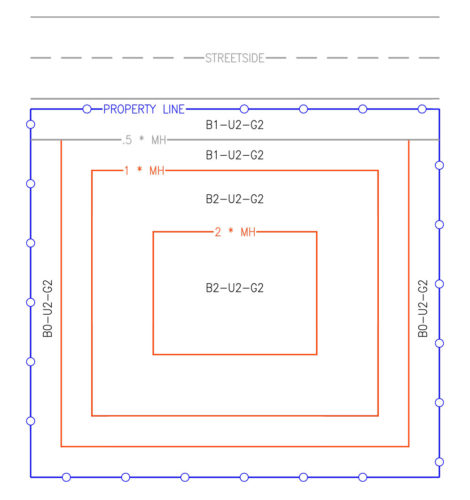
Conclusion, and Remarks: I think this is a generally sensible approach, although it seems like they could consolidate a few rows from the Backlight table, e.g. the maximum ratings between .5 and 1 MH and 1 to 2 MH are only different for zone LZ4, and there are currently exactly zero LZ4s in California. Adoption of this code would be a very different approach from that taken by most municipalities currently, in which minimum site footcandle levels are set (often much higher than needed for visibility and security), and glare, uplight, and trespass are addressed imprecisely or not at all.
Compliance is much easier when every municipality is not re-inventing the wheel. Title 24, while a challenging energy efficiency standard to meet, is at least the same on every job. Where compliance becomes difficult and time-consuming is when I have to spend hours familiarizing myself with the particular zoning requirements of Catbutt, Wyoming or whatever. Wholesale adoption of the MLO has the potential standardize the approach to site lighting, and standardize it to a better standard than exists currently.
Hey by the way: I’m considering writing more posts along these lines because there isn’t a lot out there that goes in depth on these issues. If this was helpful for you or there is a particular issue you’d like covered, drop me a line in the comments and let me know!
Footnotes:
1. All cutoff definitions from the IES Lighting Handbook, 9th edition, p. 7-8.
2. All photometric calculations generated via Photometric Toolbox v1.75, the latest version at the time of posting.
3. Addendum A to IES TM-15-07, Backlight, Uplight, and Glare (BUG) Ratings
4. IESNA RP-33, Lighting for Exterior Environments
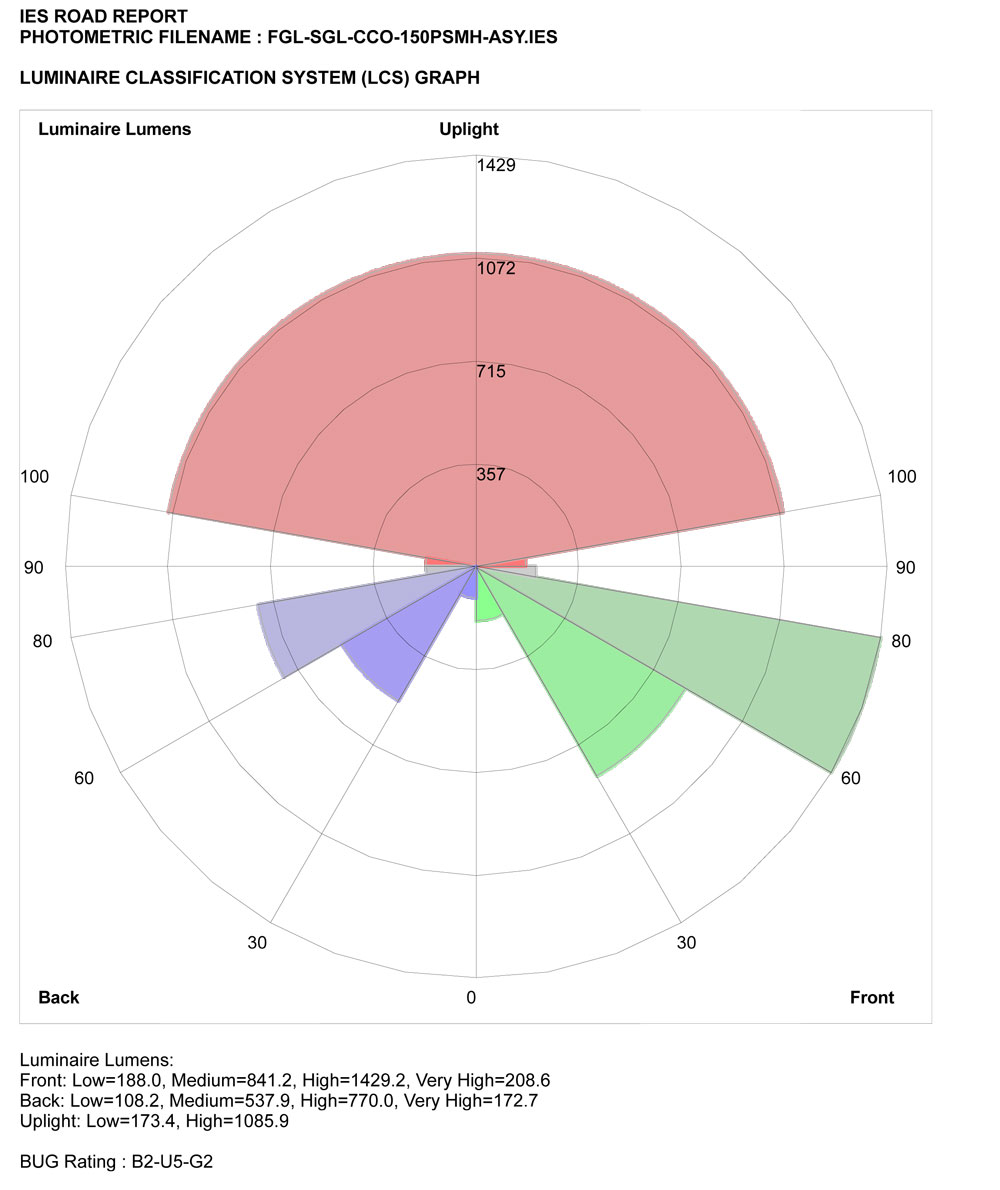
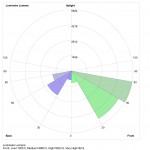
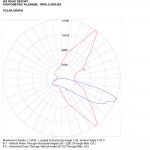
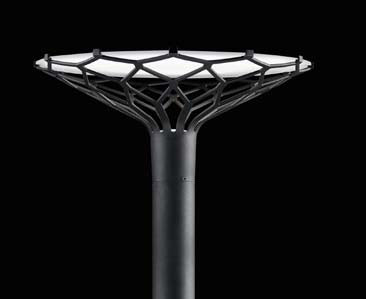
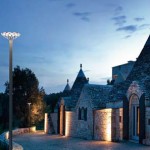
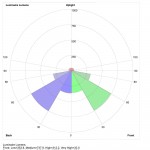
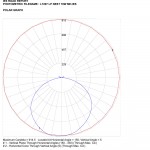
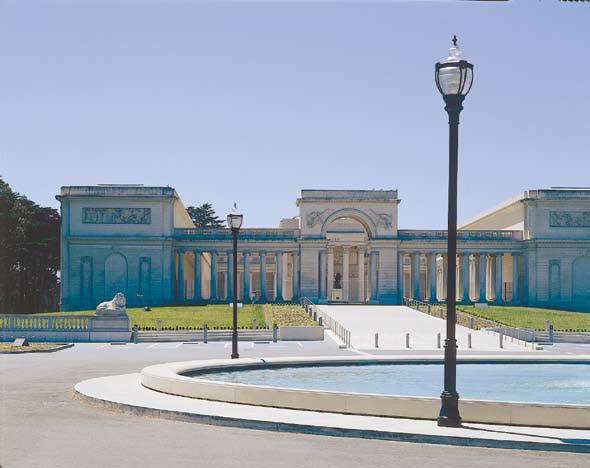
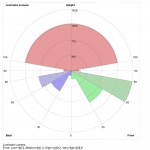
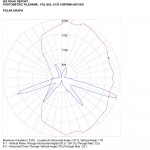
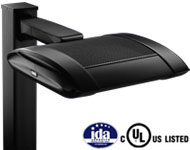
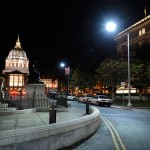
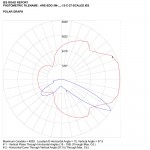
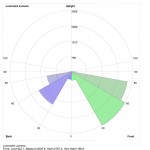
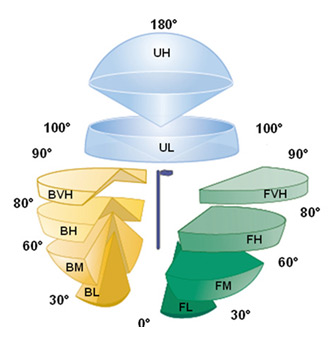
Very helpful article.
Question: If a fixture has minimal uplight, like U0 thru U2, that will result in a low veiling luminance ratio, correct?
I also read here:https://www.agi32.com/Downloads/TechnicalDocs/Classifying%20Outdoor%20Luminaires%20-%20The%20Limits%20of%20BUG%20(12-08-17).pdf
That a U0 is actually impossible to attain, and it is a judgement call by the lab technician.
Hmm, I suppose in a roadway application most of the source of the veiling glare would be in the angles just below horizontal, which would be better captured by the Glare number, not the Uplight number?
It’s definitely not impossible to attain a U0 rating, e.g. the Beta (now Cree) Edge series, which has U0 for all wattages. I use them as an example merely because they have the BUG ratings right on the cutsheet. Laziness, not an endorsement ;) But that article does raise some interesting criticisms of the system.
Excellent article!
A few quibbles:
.The way that I read this, your example of “semi-cutoff” would actually meet the requirement of “cutoff” (just barely).